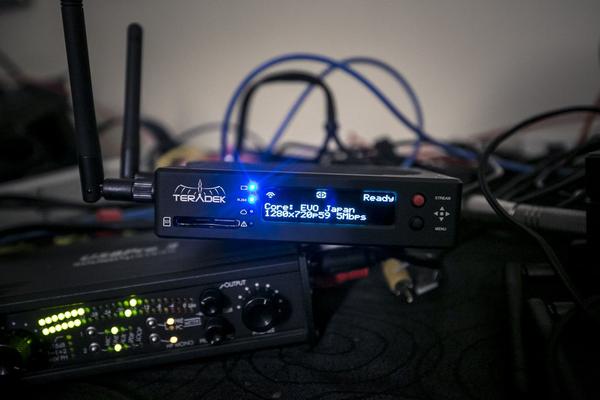Everything You Need to Know About Streaming HEVC with CORE
By Jim Bask
From Teradek
 While most live platforms and video playback tools have been slow to adopt HEVC, many broadcasters and streamers have already begun to take advantage of the data savings that HEVC compression offers.
While most live platforms and video playback tools have been slow to adopt HEVC, many broadcasters and streamers have already begun to take advantage of the data savings that HEVC compression offers.
In fact, did you know our encoders already do this? That’s right, our Cube, Slice and T-Rax encoders allow for streaming in both AVC (H.264) & HEVC (H.265) to destinations that support it. This includes current-generation Teradek decoders for point-to-point IP video, as well as Core for cloud-based stream management.
Transcoding in Core
Core is where HEVC really shines. One of the main features of Core is HEVC transcoding, which allows you to stream video to Core in HEVC, convert it to AVC, and send to your live platforms.
What are the benefits to doing this? By sending the stream in HEVC to Core, you’re effectively spending only half the bandwidth of an AVC video, but achieving the same video quality. This helps to save a ton of data, with no extra cost to you.
Companies like Drop-In TV has been doing this. As the main broadcaster for the Ironman Triathlon 2018 in Europe, they’ve been streaming HEVC video from several Cubes and Bonds to Core from all across the continent, which is pulled down to their production studio, mixed for the final edits and published to the television program. This has allowed Drop-In TV camera ops to travel thousands of miles in remote areas and keep a solid feed all throughout.
Doing this was a no-brainer for them. HEVC allows them to spend less data to send a stream to their studio, which means keeping costs low. Additionally, because they have to stream from mountains, cities and countrysides, being able to send a high-def stream at lower bitrates ensures they can send the stream reliably.
So let’s take a look at why HEVC could be a great solution for you:
It’s Perfect for Broadcasting in Remote Areas
As a broadcaster, it’s almost inevitable that at some point, you’ll have to stream from somewhere with little to no cellular signal. Sports games, destination weddings, news in outlying locations. In these scenarios, you either hire a broadcast truck with expensive satellite equipment, or you settle for sending lower-quality video to viewers at home.
But HEVC is poised to remedy this. By requiring less bandwidth to stream compared to AVC, you can set a lower bitrate to publish high-quality video.
For example, say you’re broadcasting a fishing tournament at a lake, and your 4G LTE connection is only giving you 3Mbps. If you streamed in AVC, this could achieve a 720p video at most. But by streaming in HEVC, that same bitrate can achieve 1080p resolution, giving your viewers a much better overall experience.
And RF Congested Locations
We might not be able to see it, but our airwaves are jam-packed with RF signals from all of our modern wireless devices. You can see this in locations where there are tons of people, and your phone loses its ability to do anything.
Similarly, even when multiple users share a wired network, the pipeline can become congested to the point of hampering your uplink. Congested areas are unavoidable now, so broadcasting needs to be more efficient.
Streaming with HEVC over AVC will help tremendously. Since you only need half the bitrate to send a stream out, you not only save money on data, but also have a lower chance of being bottlenecked by congestion. In areas like conventions where multiple companies are sharing a single network, this could be the difference between providing solid, high-def video and a spotty one for your viewers….read more

